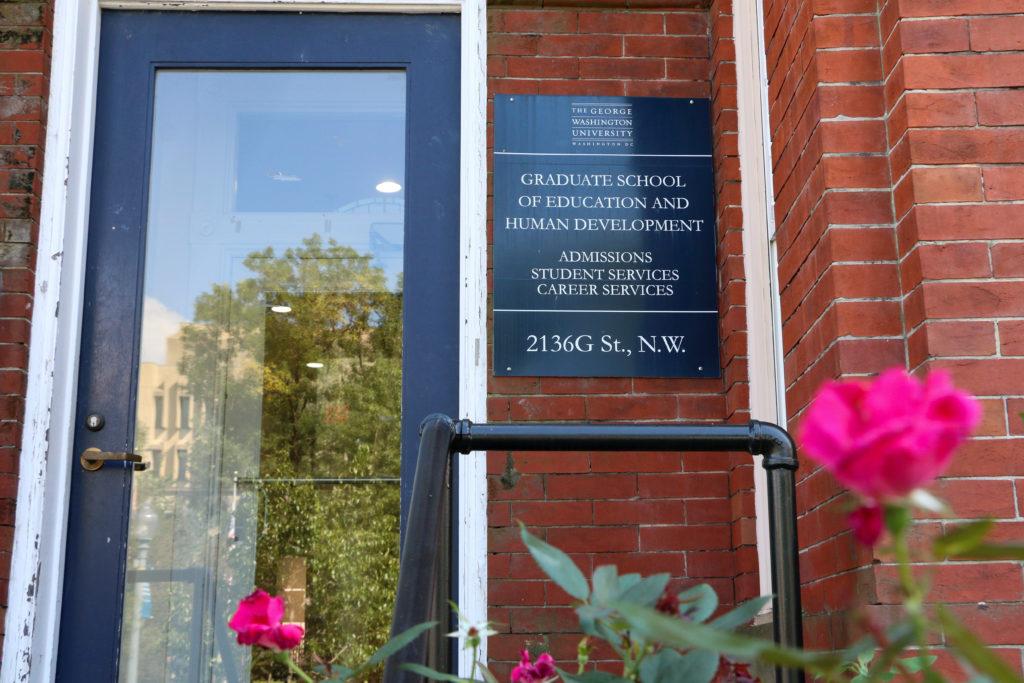The Graduate School of Education and Human Development has seen an imbalance in the percentage of men and women in its classes for more than a decade.
Female students have made up about three-quarters of the school for years, and comprised roughly 77 percent of the school last fall, even as enrollment numbers have fluctuated. Professors and experts said women still make up a majority of education programs nationwide – the result of ingrained stereotypes promoting women as caretakers, they said.
Michael Feuer, the dean of GSEHD, said the breakdown mirrors national trends in schools of education, which has been and still is “skewed female.”
“GSEHD looks to bring in students who are the best fit with our commitment to service-oriented scholarship and excellence in research to improve the practice and policy of education,” he said in an email.
Feuer said that some of the programs in GSEHD do enroll a higher percentage of male students, like the Educational Technology Leadership program, which prepares its students for education technology jobs. The program recently inducted a class that is half-male and half-female, he said.
He said the school continues to work toward diversifying its makeup and added that the 42 percent of the school is currently comprised of students of color and international students.
“We acknowledge, though, that gender balance is an ongoing challenge,” he said. “We work hard to acquire private and or public funding to provide financial support to our students.”
Feuer declined to say how the school is working to recruit more men.
Rebecca Dedmond, an assistant professor of counseling in GSEHD, said her program sees fewer men than women – an imbalance she said prevents more males from becoming role models for young children. She said faculty members would like to enroll more men in the counseling program who can offer new perspectives to the profession.
“It’s becoming a social justice issue, if you will, because we want more males but only those who are qualified and dedicated to putting youth education first,” she added.
She added that low teacher salaries often deter men from entering the field. An average public school teacher earns about $60,000 a year in the District, according to Salary.com, a company that collects and analyzes income data.
“Males need jobs that can sustain families, and that’s still a condition whether we want to admit it or not,” she said. “It’s just hard to get males into education.”
Patricia Tate, an associate professor of curriculum and pedagogy in GSEHD, said women are more attracted to the field of education because it is more of a “caregiver” role.
Women earn 300 master’s degrees in education for every 100 men, according to a 2016 study by the Council of Graduate Schools, which examines enrollment for graduate programs.
“It’s the nature of the field because education doesn’t make as much money as other occupations, and it’s a detriment,” she said.
Tate said the gender imbalance could impact courses because more diversity in the classroom – including that of gender – offers more perspectives.
“I believe that our teachers are sensitive to finding a balanced curriculum that allows perspectives to be approached,” she said.
Tessa McCarthy, an assistant professor at University of Pittsburgh School of Education, said education attracts more women than men because it is seen as a “women’s profession,” which roots back to traditional gender roles.
The University of Pittsburgh’s education program is about two-thirds female.
“Teaching is just seen as a women’s profession,” McCarthy said. “It’s really a shame because male students could benefit from having male role models in the classroom.”
Pamela Black-Colton, the executive director of admissions and student services at the Warner School of Education at University of Rochester, said that her school does enroll slightly more female students than male students, but it does not “feel totally lopsided.” She said the gender gap is more apparent in programs like teaching English as a second language and elementary education.
Black-Colton said it is more important to enroll a diverse class of students who are active members of the community than to prioritize having a class equally male and female.
“We recruit students who have our vision of social justice, who are agents of change, and make a difference in the lives that we touch,” she said. “That’s our focus and we look for diversity between in gender and all other forms.”
Allison Kwon contributed reporting.





